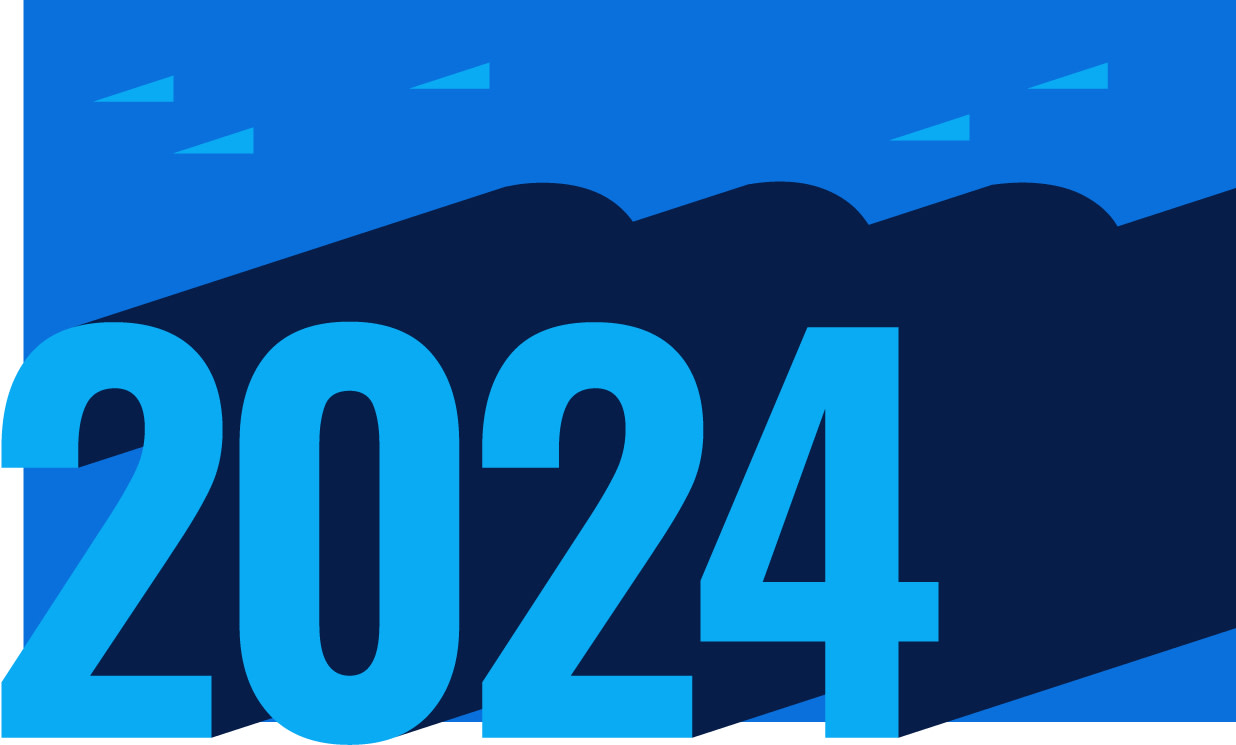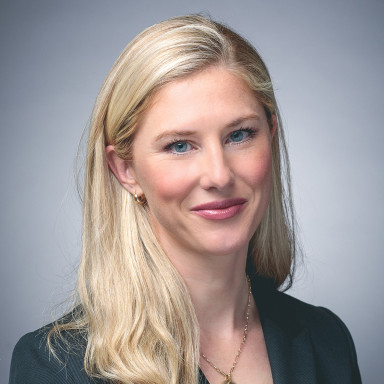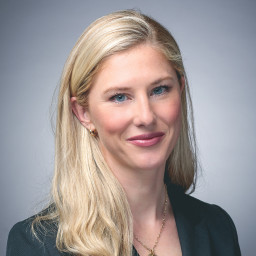Investing is by its very nature long term. Funds are designed to be held for five years plus, in a portfolio alongside other, different funds, to help reduce risk through the market cycle. This long-term view means that every investor will face periods of uncertainty and market volatility in their journey to reach their financial goals. 2024 is likely to be one of those bumpy times.
But that doesn’t mean you shouldn’t invest. In fact, times of market turbulence can create excellent investment opportunities – and don’t worry about getting your timing just right, over the long term, it is time in the market, not timing the market which has been proven to be the best indicator of outperformance.
Investing in these funds isn’t right for everyone. Investors should only invest if the fund’s objectives are aligned with their own, and there’s a specific need for the type of investment being made.
Investors should understand the specific risks of a fund before they invest, and make sure any new investment forms part of a diversified portfolio.
This isn’t personal advice or a recommendation to invest and remember all investments and any income they produce can fall as well as rise in value – you could get back less than you invest. Past performance is not a guide to future returns. If you’re not sure an investment is right for you, please seek advice.
Information correct as at 21 November 2023 unless otherwise stated.
See how we picked our five funds to watch
Artemis Corporate Bond
An experienced bond fund manager
Stephen Snowden has been the manager of the fund since joining Artemis to launch it in October 2019. He's a seasoned corporate bond investor with over 20 years' experience running similar strategies. We believe his experience leaves him well positioned to navigate through different market conditions. Snowden has the support of co-manager Grace Le who joined Artemis in 2020 to help run the fund.
The fund aims to generate a combination of income and growth over the long term and could form part of a diversified bond portfolio or diversify an equity-focused portfolio.
The fund's investment process blends 'top down' macro-economic research with 'bottom up' fundamental analysis of individual companies' bonds. The macro analysis helps the managers evaluate which sectors and areas of the economy could benefit from any trends or shifts that might be occurring.
This macro-economic research is combined with 'bottom up' analysis of bond-issuing companies. This helps Snowden and Le determine which bonds are attractively priced and they think could offer the most compelling opportunities to generate returns.
Within bond markets, we think that the investment grade corporate bond space is well placed to navigate market conditions from here. With the potential of recession in 2024 we are mindful of bonds issued by those companies with the worst credit ratings in the high yield category, because of the heightened risk of those companies defaulting on their bond payments during a recession. At the same time, investment grade corporate bonds often offer a higher yield than their government bond counterparts, which helps to cushion against potential losses should the economy deteriorate, though of course there are no guarantees.
We think the fund could be a good choice as part of a portfolio that has a long-term view or a portfolio being built to provide income. But be aware it could be more volatile than other bond funds.
The fund can use derivatives and invest up to 20% in high-yield bonds, both of which add risk.
Troy Trojan
A defensive mindset
Sebastian Lyon and Charlotte Yonge like to keep things simple. They aim to shelter investors' wealth just as much as grow it. Rather than trying to shoot the lights out, the fund aims to grow investors' money steadily over the long run, while limiting losses when markets fall. It tries to experience smaller ups and downs than the broader global stock market or a portfolio that's mainly invested in shares.
The fund is focused around four 'pillars'. The first contains large, established companies Lyon and Yonge think can grow sustainably over the long run, and endure tough economic conditions. The second pillar is made from bonds, including US index-linked bonds, which could shelter investors if inflation rises. Some of the fund is also invested in traditional UK government bonds (gilts). The third pillar consists of gold-related investments, including physical gold, which has often acted as a safe haven during times of uncertainty. The final pillar is ‘cash’. This provides important shelter when markets stumble, but also a chance to invest in other assets quickly when opportunities arise.
The managers have tended to focus on companies based in developed markets, such as the US and UK. This includes some of the world's best-known companies with highly recognisable brands. The manager has the flexibility to use derivatives, gearing (borrowing to invest) and invest in smaller companies, which, if used, adds risk. The fund also operates a concentrated portfolio which means each investment can contribute significantly to overall returns but it can increase risk.
Troy Trojan Asset Allocation
With the potential for recession in 2024, we think using a fund that invests with a defensive mindset makes a lot of sense. The diversification from both government bonds and gold within this fund has the potential to smooth returns in multiple market environments.
We think the fund could form the foundation of a broad investment portfolio, bring some stability to a more adventurous portfolio, or provide some long-term growth potential to a more conservative portfolio.
Fidelity Global Dividend
Income from around the world
Daniel Roberts is a highly experienced global investor with a focus on providing long-term income and growth whilst looking to provide shelter in weaker markets. He has managed the fund for over ten years and developed a robust process looking for quality companies that provide sustainable dividends whilst being mindful of valuations.
Roberts has the entire global universe to pick from, however he chooses to invest in companies that he believes have predictable revenue streams that can continue to grow and provide reliable dividends to investors. Though it’s worth remembering that all income is variable and not guaranteed. He keeps a close eye on company’s valuations ensuring he doesn’t overpay but will also not chase the higher yielding areas of the market if he thinks they are overvalued, or the dividends aren’t as reliable as he’d like. He has a preference for companies with simple balance sheets, little debt and experienced management teams.
The focus on valuations and income has led Roberts to have a high degree of exposure to Europe and the UK. This also means he will typically be less exposed to the US market when compared to a global benchmark. Although we are wary of the fund’s Europe overweight, given the macroeconomic backdrop, from a valuation point of view the market looks cheap compared to its long-term history. Roberts also has a strong track record of picking winning stocks in Europe, and the income discipline of the fund helps avoid value traps.
Geographic Exposure (% TNA)
| Fund | Index | Relative |
|---|---|---|---|
United States | 30.0 | 62.7 | -32.6 |
United Kingdom | 14.9 | 3.7 | 11.2 |
France | 11.2 | 2.9 | 8.3 |
Switzerland | 9.4 | 2.4 | 7.0 |
Germany | 8.7 | 2.0 | 6.7 |
Finland | 4.6 | 0.2 | 4.4 |
Japan | 4.6 | 5.5 | -0.9 |
Netherlands | 3.0 | 1.1 | 2.0 |
Spain | 2.9 | 0.6 | 2.3 |
Taiwan | 1.9 | 1.6 | 0.3 |
Others | 4.0 | 17.5 | -13.5 |
Total Geographic Exposure | 95.2 | 100.0 | |
Other Index / Unclassified | 0.0 | 0.0 | |
Total Equity Exposure | 95.2 | 100.0 |
Regional Exposure (% TNA)
Fund | Index | Relative | |
|---|---|---|---|
Europe (ex-UK) | 41.3 | 12.0 | 29.3 |
North America | 30.0 | 65.4 | -35.4 |
United Kingdom | 14.9 | 3.7 | 11.2 |
Japan | 4.6 | 5.5 | -0.9 |
Emerging Markets | 3.5 | 10.7 | -7.2 |
Asia Pacific (ex-Japan) | 0.9 | 2.7 | -1.8 |
Total Regional Exposure | 95.2 | 100.0 | |
Other Index / Unclassified | 0.0 | 0.0 | |
Total Equity Exposure | 95.2 | 100.0 |
The manager can invest in derivatives and smaller companies which adds risk.
The fund’s dividend yield is 2.68% (as at 31 October 2023) but remember all yields are variable and not a reliable indicator of future income.
Given the likelihood of growth slowing in many developed markets and a real threat of recession, the income the fund provides can help cushion the blow if equity markets were to fall. We expect this fund to perform better than most global funds when markets are falling however, this fund has typically lagged its global peers when markets have risen.
We think this fund could provide a portfolio with some much-needed shelter and income should markets become volatile.
The fund takes charges from capital, which can increase the yield but reduces the potential for capital growth.
Artemis Income
Income and growth in one
The Artemis Income fund invests in companies that the managers think can pay a sustainable income through the market cycle, regardless of the economic backdrop. It’s mainly made up of large UK listed businesses, though there are some holdings in medium-sized and overseas companies too.
We think the fund is managed by one of the best teams in the business. The experienced trio of Nick Shenton, Andy Marsh and industry stalwart Adrian Frost have over 70 years of investment experience between them. They’ve developed a strong partnership and have been investing through different good times and bad.
The managers aim to outperform the FTSE All-Share index over the long term while providing a growing income and a dividend yield above what’s offered by the index. The fund has a dividend yield of 4.16% (as of 31 October 2023).
They invest in companies they think can pay a stable and sustainable income through the market cycle, regardless of the economic backdrop. These are often businesses with lots of reoccurring revenues which increases the chance they can retain and grow their customer base, profits, and therefore dividends over time, although nothing is guaranteed.
The UK remains out of favour with many investors, but we expect it to remain an attractive income market. It continues to be one of the highest yielding equity markets and is home to many world class companies selling their goods and services across the globe. We think the Artemis Income team are well placed to make the most of this attractive opportunity set by investing in a diversified range of companies.
We think the fund could work well alongside other asset classes as part of an income focused portfolio or could complement other regional equity income funds. The fund takes charges from capital, which can increase the yield but reduce the potential for capital growth.
iShares Emerging Markets Equity Index
Access to emerging markets at low cost
There’s no place quite as diverse as the emerging markets. From big Asian countries such as India and China to South Africa and Latin America, these regions offer a range of countries at different stages of economic development. Some are rich in commodities and natural resources, some rely on exporting goods to Western economies, and others have vibrant local consumer-driven growth.
These markets have grown rapidly in recent decades. As young, emerging economies, they tend to offer greater growth opportunities than the West. This comes with higher investment risk and more volatility though.
Looking ahead to 2024, the economic outlook for emerging markets is largely positive with the IMF forecasting 4% GDP growth for emerging markets and developing economies, which is over double the projections for advanced economies. Emerging market companies are also expected to produce superior earnings growth next year following a tougher 2023.
India and China form the bedrock of emerging market indices. In 2023 the trajectories of these two markets diverged significantly and views amongst active fund managers differ on the outlook for these two emerging giants.
To mitigate the risk of being on the wrong side of this call, we feel a passive option in this space could be a good option over the next twelve months. This fund invests in a broad spread of companies based across emerging countries, including China, India, Brazil, South Africa and Taiwan. Sector wise, it provides exposure to companies like TSMC, the world’s largest semiconductor manufacturer and HDFC, one of India’s leading private banks. Though some smaller companies feature which can add risk.
Investments by country
As a tracker fund, it simply aims to track the performance of the broader emerging stock market, rather than try to outperform it. It’s one of the lowest-cost options for getting exposure to emerging markets and could help boost long-term growth potential – with some volatility along the way though.
5 reasons to buy funds with HL
Whether you’re a first time or experienced fund investor, we can help you. You’ll get all the tools and information to make picking funds easy, giving you the best chance to grow your money over the longer-term and reach your future goals.
Great value – there’s no charge to buy and sell funds and you’ll never pay more than 0.45% per year to hold funds with us. Any investments you choose will have additional charges. View our charges.
Expert investment ideas – our experts spend thousands of hours analysing investments each year to come up with the Wealth Shortlist, our list of funds they think have the best performance potential over the longer-term.
Low minimum investment – start investing in funds from just £100 or £25 per month.
Wide variety of account options – whether you’re investing for yourself or a child we have different investment accounts to help you meet your goals.
Easy to get started – if you don’t want to choose your own funds, we have other options such as using our ready-made investments, or you can speak to an HL financial adviser.


